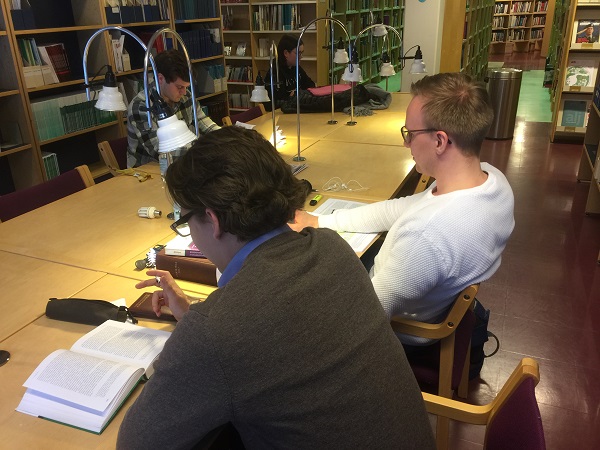Enrollment to polytechnic institutes increases
Published : 19 Apr 2019, 20:13
Updated : 20 Apr 2019, 01:24
Education leading to a higher university of applied sciences degree increased further, said Statistics Finland in a press release.
According to Statistics Finland's Education Statistics, around 128,500 students attended education leading to a university of applied sciences ( Polytechnic Institutes) degree and almost 13,500 students education leading to a higher university of applied sciences degree in 2018.
The number of students attending education leading to a higher university of applied sciences degree continued its around 10 per cent annual growth and the number of degrees grew by nearly 14 per cent from the previous year. The number of students in education leading to a university of applied sciences degree remained more or less the same, but the number of degrees grew by over five per cent from the year before. In all, 24,800 university of applied sciences degrees were completed, which is over one thousand more than in the previous year.
It has been possible to study for a university of applied sciences degree in education arranged as daytime or multiform studies from 2015 onwards. A total of 103,400 students studied in daytime programmes and 25,100 in multiform programmes in 2018.
Women made up slightly over one-half, 51 per cent, of students attending education leading to a university of applied sciences degree. Around two out of three students in education leading to a higher university of applied sciences degree were women. Fifty-five per cent of new students in education leading to a university of applied sciences degree and 65 per cent of new students in education leading to a higher university of applied sciences degree were women.
At 29 per cent of all students, there were most students in education leading to a university of applied sciences degree in the field of health and welfare. More than four out of five of them were women, 83 per cent. The field of engineering, manufacturing and construction was the second biggest, where slightly under 24 per cent of students were studying. Of them, 83 per cent were men. The third biggest field of education was business, administration and law, where around one-fifth of university of applied sciences students were studying. In total, around three-quarters of all students in education leading to a university of applied sciences degree were in these three fields.
In education leading to a higher university of applied sciences degree the number of students was also highest in the field of health and welfare, around one-third of all students. Slightly more than every fourth student in education leading to a higher university of applied sciences degree was studying in the field of business, administration and law and slightly under every fifth in engineering, manufacturing and construction.
The number of students was highest at Helsinki Metropolia University of Applied Sciences, 16,400. The numbers of students were next highest at the Haaga-Helia University of Applied Sciences and the Turku University of Applied Sciences, both with over 10,100 students. The smallest universities of applied sciences by number of students were Åland University of Applied Sciences, which had a little over 500 students, and the Police University College with good 1,000 students.
The number of new foreign university of applied sciences students grew in 2018 by 10 per cent after the drop in the year before, but it did not, however, reach the level of 2016. Of foreign students, around 2,450 students started education leading to a university of applied sciences degree and 350 students education leading to a higher university of applied sciences degree.
Of all new students, the share of foreigners was slightly over seven per cent, having been slightly under seven per cent in the previous year. In the 2010s, the share has mostly been between seven and eight per cent. The share of foreigners was also around seven per cent among all university of applied sciences students. The growth from the previous year was three per cent, that is, more or less the same as the number of foreign students fell between 2016 and 2017.


